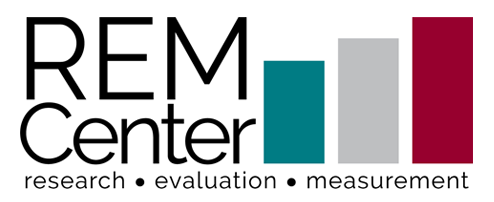Task Details
Drawing a Landscape
In this task, students will demonstrate their ability to create a piece of art using specific visual arts vocabulary. Students should be familiar with creating drawings using pencils. The task may take place during one or more class periods.
This page contains an 'at a glance' overview of this task, downloadable teacher guide and student booklet documents, and the task rubric with student work samples and rating justifications for each proficiency level.
Content Area, Artistic Process, & Anchor Standard
| Visual Arts | ||
| Artistic Process | Creating | |
| Anchor Standard 1 | I can use the elements and principles of art to create artwork. | |
Targeted Grade Level(s)
- Lower Elementary
- Upper Elementary
Documents
Classroom Piloting Status
- Piloted
Supplemental Materials
- Student Booklet
Directions, drawing area, written reflection, and rubric
Rubric and Sample Student Work
| ELEMENTS AND PRINCIPLES OF ART | |||
| Proficiency Level | Description | Sample Student Work | Justification |
|---|---|---|---|
| Exemplary | Thoroughly addresses all areas:
|
Exemplary Sample 1 Exemplary Sample 2 |
Sample 1 The drawing includes a variety of textures in the roof, the tree, and the grass. It includes patterns in the flowers and many details that enhance the drawing. Sample 2 This drawing includes many textures, such as the tree bark, the leaves on the trees and bushes, and the grass. The windows have a repeating pattern, and the drawing includes many details. |
| Proficient | Mostly addresses all areas:
|
Proficient Sample 1 Proficient Sample 2 |
Sample 1 The drawing includes many details but is lacking in variety. The textures and patterns enhance the drawing. Sample 2 The drawing includes quite a few details and patterns, which enhance the piece. Textures are not widely varied, but the shading in the hills provides a smooth texture that is different from the house's texture. This sample represents a student who demonstrated a proficient proficiency level across all dimensions. |
| Approaching Proficient |
|
Approaching Proficient Sample 1 Approaching Proficient Sample 2 |
Sample 1 The drawing contains some details and patterns but limited texture. This sample represents a student who demonstrated an approaching proficient proficiency level across all dimensions. Sample 2 The drawing includes some details and patterns that enhance the drawing, but it does not include many textures. |
| Emerging |
|
Emerging Sample 1 Emerging Sample 2 |
Sample 1 The drawing includes limited details and textures. The pattern of dark and light in the house does not enhance the drawing. This sample represents a student who demonstrated an emerging proficiency level across all dimensions. Sample 2 The drawing is very limited in details, textures, and patterns. This sample represents a student who demonstrated an emerging proficiency level across all dimensions. |
| Needs Major Support | The drawing is off topic, incomplete, or does not adequately address the task. |
Needs Major Support Sample |
The drawing does not reflect a landscape with a building. |
| OVERALL COMPOSITION | |||
| Proficiency Level | Description | Sample Student Work | Justification |
| Exemplary | Thoroughly addresses all areas:
|
Exemplary Sample 1 Exemplary Sample 2 |
Sample 1 The drawing fills the space and is unified. There is a clear distinction between foreground and background with a sense of depth achieved by darker shading in the foreground. Sample 2 The drawing demonstrates a unified composition with a sense of depth and a clear distinction between foreground and background. |
| Proficient | Mostly addresses all areas:
|
Proficient Sample 1 Proficient Sample 2 |
Sample 1 The use of shading in the drawing distinguishes the foreground from the background.The sense of depth is minimally evident. Sample 2 The drawing demonstrates a unified composition with a sense of depth, but the distinction between foreground and background is not clear. This sample represents a student who demonstrated a proficient proficiency level across all dimensions. |
| Approaching Proficient |
|
Approaching Proficient Sample 1 |
Sample 1 The drawing fills most, but not all, of the space. There is some sense of depth in the road, but there is little distinction between foreground and background. This sample represents a student who demonstrated an approaching proficient proficiency level across all dimensions. Sample 2 The drawing includes minimal distinction between foreground and background. It has a minimal sense of depth, and the size of the house is not in proportion with the rest of the landscape. This sample illustrates that students may demonstrate different proficiencies across rubric dimensions. The drawing is proficient in the elements of art dimension and approaching proficient in the use of principles dimension. |
| Emerging |
|
Emerging Sample 1 Emerging Sample 2 |
Sample 1 The drawing does not include a sense of depth or distinction between the foreground and background. This sample represents a student who demonstrated an emerging proficiency level across all dimensions. Sample 2 The drawing is very simple and does not demonstrate depth. This sample represents a student who demonstrated an emerging proficiency level across all dimensions. |
| Needs Major Support | The drawing is off topic, incomplete, or does not adequately address the task. |
Needs Major Support Sample 1 Needs Major Support Sample 2 |
Sample 1 The drawing includes three buildings. It has no sense of landscape, depth, or foreground and background. Sample 2 The drawing does not reflect a landscape with a building. |





